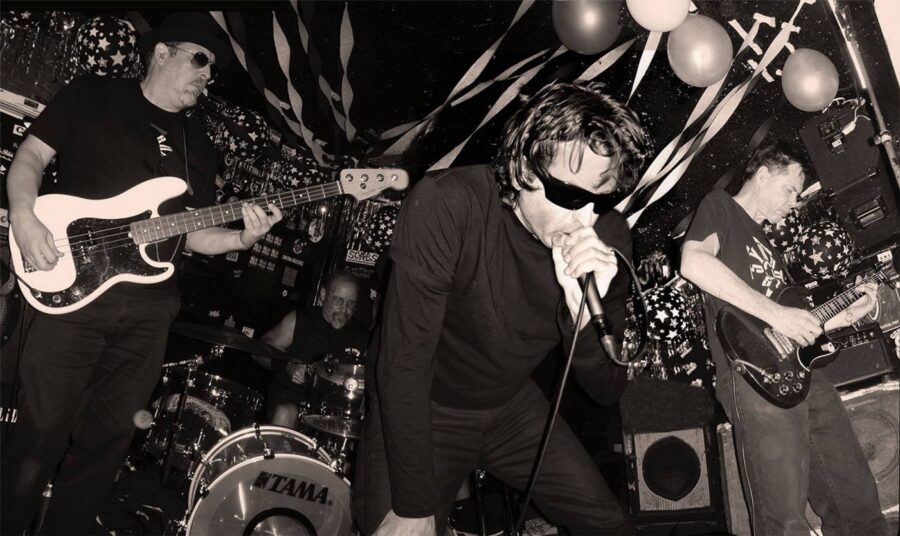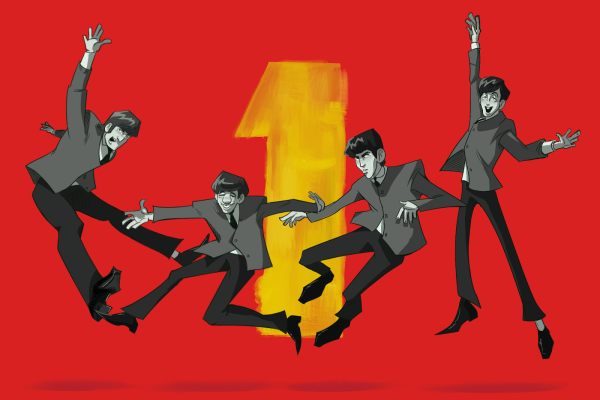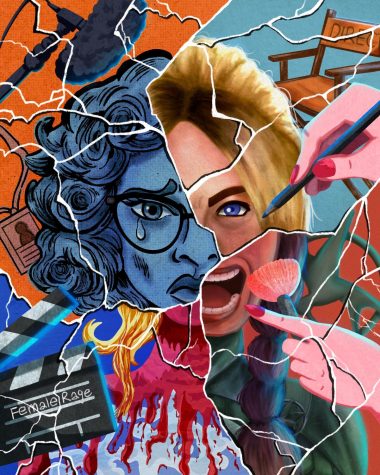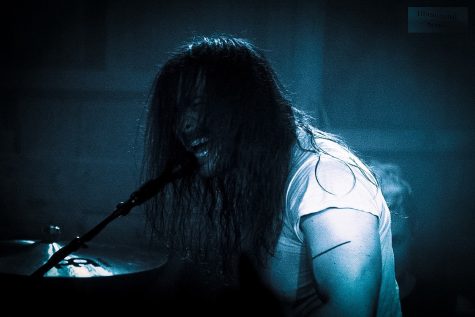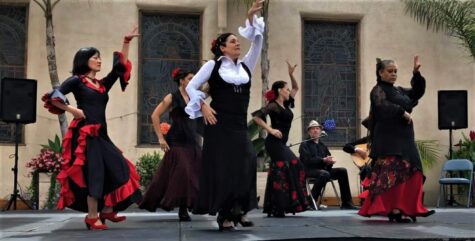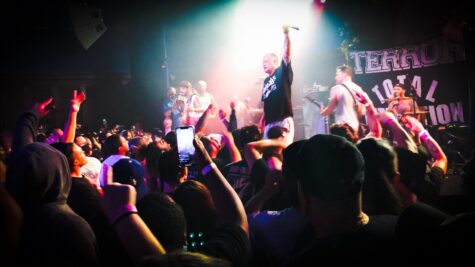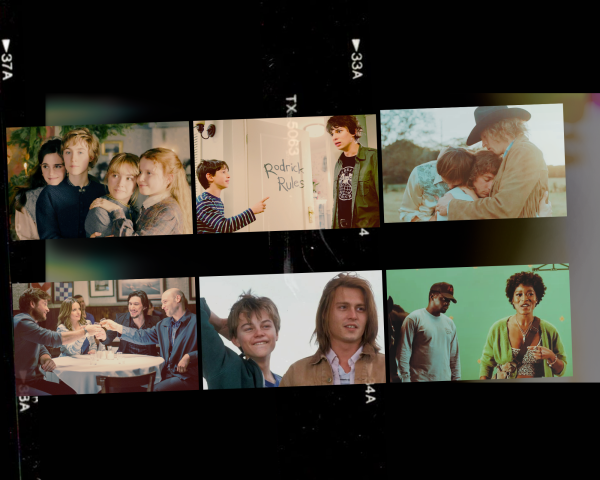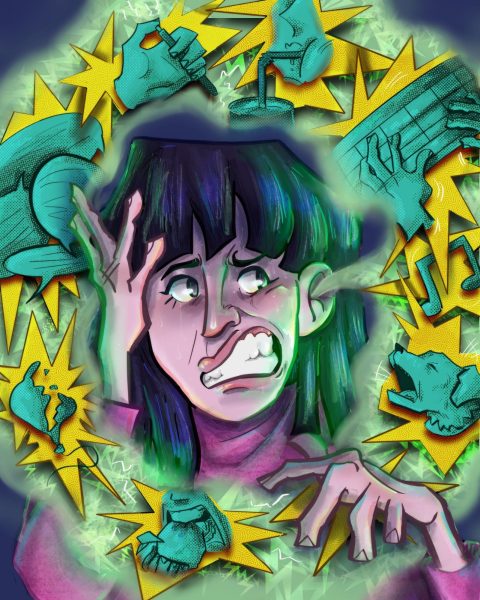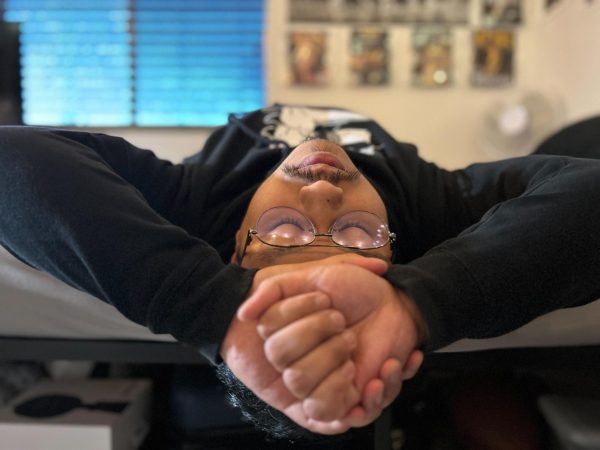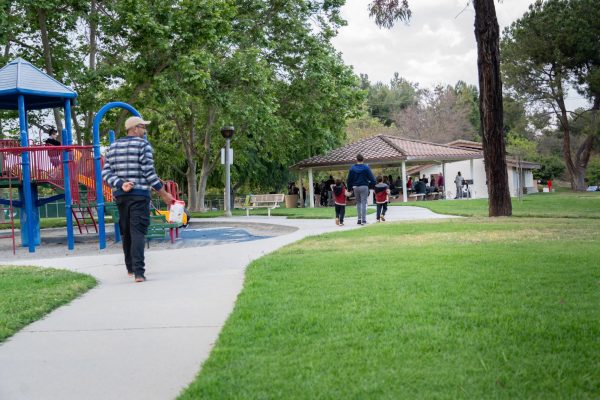The Doll Hut, Loud and Proud in the OC
The last place one would expect to find a punk rock n’ roll institution penetrated with years of blood, sweat, tears, and alcohol would be the one that can legitimately claim to be neighbors with Mickey and Minnie Mouse.
Only two measly miles out from underneath Sleeping Beauty’s castle’s shadow on the corner of Manchester and Adams in Anaheim, Calif., you’ll find a rustic red and white roadhouse snuggled in between aging industrial buildings and storage spaces near the 5 Interstate freeway.
From its exterior, you would never have guessed that inside this small building, a different kind of magic happens. A magic drastically unlike the kind spending a hundred bucks a ticket to experience mile-long lines and piercingly loud crying babies at the royal kingdom down the road will provide.
Granted, it’s not as grandiose and majestic as the happiest place on Earth, but to those who have stepped inside the small shack on 107 South Adams Street that’s the last thing they want. The World Famous Doll Hut is their definition of enchantment.
Loud, fast, dirty, beer-soaked enchantment.
In a way, the Doll Hut is its own magical kingdom. But instead of parades, you’ll find mosh pits. Instead of hidden Mickeys, you’ll find a plethora of faded stickers slapped onto the wood-paneled walls, and half-torn show flyers from the month before.
It serves as a sort of drunken makeshift scrapbook, memorializing the bands who have walked through the building’s threshold. And while you won’t find dancing fountains and confetti, you will find spilled beer and scattered cigarette butts. This is part of what gives this legendary music house its beloved charm. It’s what makes the Doll Hut the real deal.
It’s also where you will find Michael “Mac” McGarvey roaming around the small exterior of the club’s territory. From checking IDs in the front of the house to making sure bands are loaded in the back patio, McGarvey is extremely hard to miss.
He’s the current king of this dysfunctional castle. A crown he proudly wears.
“There’s a lot of history here,” McGarvey said. “There’s a lot of magic in these walls. It’s a place that needed to do live music again and needed to be open. It was important to me. So when I had the opportunity to take it, I couldn’t turn it down.”
The opportunity he couldn’t turn down was the chance to become the next in line to inherit one of Orange County’s greatest contribution to the music scene. While it’s only 1,000 square feet with a max capacity of 49 people, the guest book that the Hut has is pretty gigantic.
It has seen Orange County royalty come rolling through with bands like Social Distortion, Bad Religion, The Adolescents, The Offspring, The Vandals, and Sublime walking through their doors.
But the history of the Doll Hut is not without its trials and tribulations. On more than one occasion, it was presumed that the Doll Hut would not live to see another day .
When its original owner, Linda Jemison, first opened the Doll Hut in 1989 her sole mission was to make a space that was disconnected from the music industry’s political bullshit which had been soiling the music scene at the time. She wanted to provide a safe haven for true music lovers. A place they could call their own, and not have to deal shady promoters.
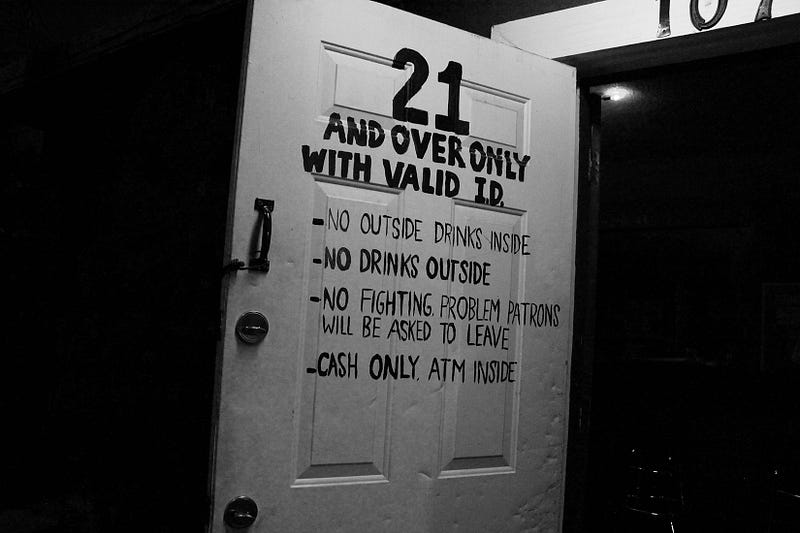
“You know what was great about the Doll Hut,” Jemison said. “You can totally ignore the entire hair band thing that was happening in Hollywood. It didn’t even exist in Orange County for us. We respect roots rock, country, and true rock-and-roll bands like the Jones or the El Durados. It’s funny. We totally missed the whole glam rock and hair rock thing. It just didn’t exist.”
It was known as the Doll Hut when Jemison and her partner at the time took over but the decision to keep the name was an easy one. Jemison said the name had the stamp of approval from the Pontiac Brothers, who were the only band to play the bar before her ownership, because of their 1985 album, “The Doll Hut.” After a split with her ex-partner, the Doll Hut became ‘Linda’s Doll Hut,” an establishment that brought it back to the basics: loud music, cheap beer, and a sense of camaraderie between fans and bands.
At Linda’s Doll Hut, everyone was at the same level — both figuratively and literally since it wasn’t until years later that the Doll Hut even saw a stage.
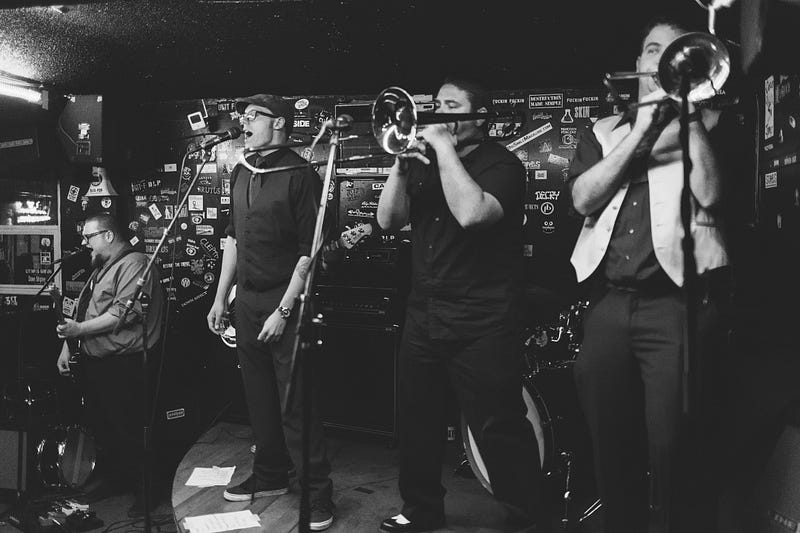
With past lives that included a house, a cafe, and a former hangout for train engineers during the area’s train yard days, the Anaheim venue was a breath of fresh air among the smoggy, choke-inducing environment of the current music scene.
It became the local stomping grounds for musicians, people who wanted to be musicians, and people who wanted to be around musicians. It was not uncommon to rub elbows with the members of No Doubt or to experience an intimate band set from music staples like Mike Ness from Social Distortion.
“I was putting together the Orangewood Children Home’s benefit shows and [Mike Ness] called me and said ‘I was in Orangewood Children Home. I want to do the benefit. I want to play there,’” said Jemison.
“I was already doing non-profit before I bought [the Doll Hut], with the American Lung Association and the AIDs Services Foundation. So owning the club, I knew I could do non-profit shows whenever I wanted. And Mike Ness jumped up and said ‘I want to play your Orangewood show.’ And so, a couple of years in a row, he would do Solo shows.
His manager was like ‘We gotta do an SD show there. We gotta break in the new drummer.’ So they did several shows breaking in new drummers. Mike is a really amazing guy when it comes to charity work.”
Ever since Jemison first stepped foot into the Doll Hut, her goals of helping musicians, making a home for them where they could feel safe, make money, and further their careers were top priority. As a former musician, Jemison knows the feeling of getting ripped off by local promoters, and she wanted her place to be the opposite.
“I’ve been burned. I’ve been so burned by the music business,” Jemison said. “It’s really hard for me to go be the cheerleader. But what the Doll Hut gave was really important, and I hope it continues to do what it does. It gives people hope.”
When Jemison first announced that the Doll Hut would be turning off its iconic neon sign for good in 2001, it was a huge blow to the music community. Fingers pointed to the chaotic freeway construction located around the Hut, as the growing ailment behind its recent decline in attendance. Despite her greatest efforts to keep afloat, Jemison eventually fell into serious debt.
She knew that she had to think of something to keep the Doll Hut going, and she was going to have to think of it faster than the guitars played in her club.
“I had a feeling that if I said ‘Alright, I’m closing the Doll Hut, that’s it. I’m done. That’s it. I’m broke. I’m not making any money,’ I knew people would come forward,” Jemison confessed.
After negotiating with a local magazine, Jemison exchanged the cover of the magazine’s next issue for an exclusive on what was happening with the Hut in an effort to draw a passionate buyer for the beloved music clubhouse.
“When I got [the magazine] the morning it came out, I literally cried. I was like ‘Oh my god, this is so sad.’ But it worked and I started getting calls that day like ‘I want to buy the club’ ‘I wanna buy it!’ They bought it. It continued. It was a little bit sneaky but it kept going and that was my plan. I felt bad about it, but I didn’t make a huge profit out of it. I paid my debt.”
Soon the keys found themselves in the hands of Blue and Anthony Castaneda, a couple who had met at the Hut and were regulars. The Castanendas continued to breathe life into the club’s lungs before once again putting the music intuition for sale at the end of 2012.
From then, it continued to jump from owner to owner but continued to have the same fate. For many, it was thought that the club’s nine lives had finally run out. That’s until McGarvey, who was the club’s house entertainment director at the time, stepped up to the throne.
“It happened really quick,” McGarvey said. “I had the meeting on a Monday, got the keys on a Tuesday, we put in sound on a Wednesday, and on Thursday, I had the first show.”
Keeping the Doll Hut open for business was a sentimental mission for McGarvey. The Anaheim landmark is one of the few music venues that is not under corporate rule, unlike neighboring businesses like the City National Grove of Anaheim next to Angel’s Stadium, or the House of Blues in Downtown Disney.
“Everybody that’s owned [the Doll Hut] has done live music at some point, but I didn’t necessarily want to do anything different, I just wanted to do it the way I wanted to do it,” McGarvey said.
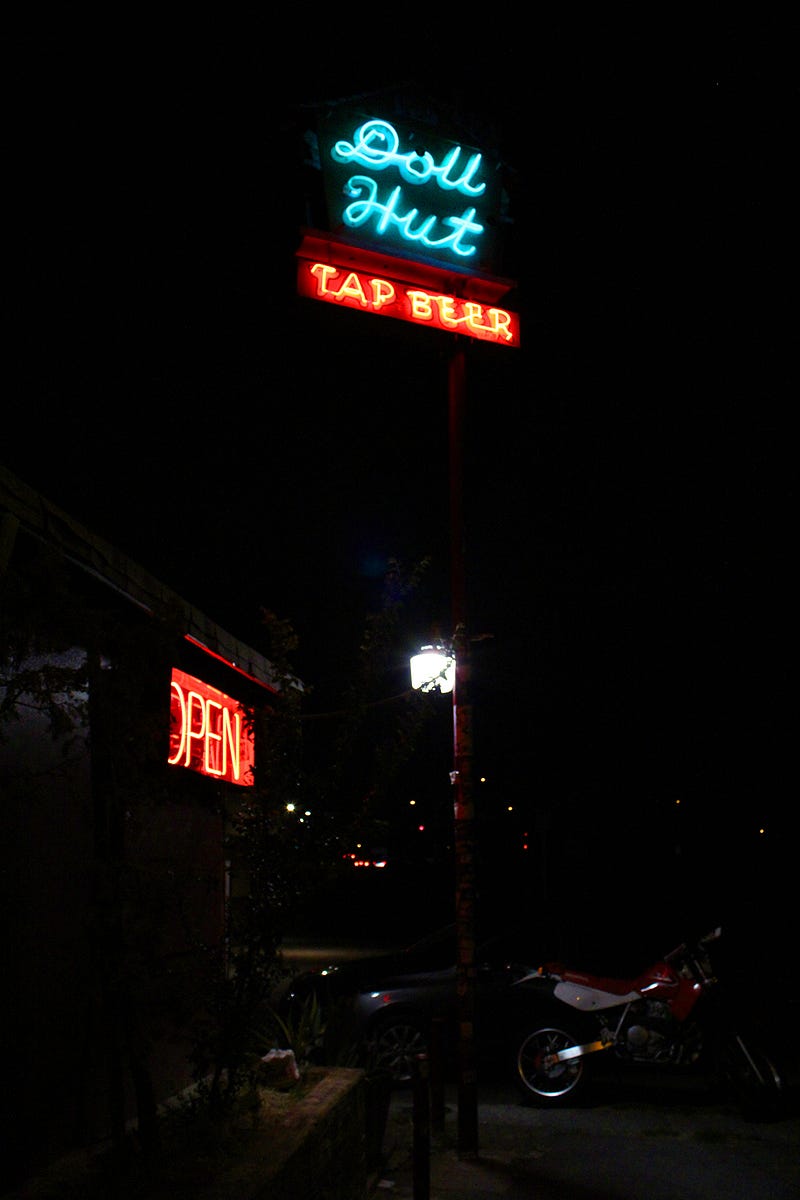
According to McGarvey, the Hut now operates seven days a week, and sees about 120 to 140 bands on its stage each month.
Jay Sin knows firsthand the significance the Doll Hut has to inspiring musicians looking for their start.
“It has given many existing, and new bands in the area a voice,” the guitarist of the punk band Narcoleptic Youth said. “[It’s] somewhere to hone their craft, and make a name for themselves. I feel this can be the most important step in a music scene. Nobody starts at the House of Blues…”
Brian Mashburn shares the sentiment when it comes to the legacy that the Doll Hut holds. His band, Save Ferris, would often play the Doll Hut during the glory days of the O.C. Ska Scene before they gained popularity with such hits as “Come On Eileen” and “The World is New.” Even though Save Ferris is no longer together, Mashburn remembers how the Doll Hut played a essential role in his career.
“It was one of the few real music venues that had a name you had heard of,” Mashburn said. “You could see it’s local ads in music mags like Mean Street and Bam. You’d drive by it and wonder, what is that little place all about? I remember hearing from other high school aged musicians’ tales of how Social Distortion had played there, and how Mike Ness would do surprise shows from time to time. That sort of built a mystique about the place. So by the time I was old enough, and played there with my band Save Ferris it was almost like a rite of passage.”
Mashburn said that the club’s tiny layout was surprising at first but it was contributed to the club’s charm. It made shows intimate, and forced people to interact with each other whether they knew them or not. He said in its own special way, it was like a West Coast CBGB’s.
McGarvey agrees. “People feel at home here. People like to be who they are, and we let them. You can get a little rowdy, throw a little beer, have a good time, and not have to worry about being judged for it.”
Mashburn said that the Doll Hut became the a central spot in the Orange County scene for anyone who loves local music, and wants it in a legit and non-pretentious environment that’s filled with nothing but good times and good people.
Even after Save Ferris grew in popularity, Mashburn said that they would still return to the Doll Hut to see friends hanging out, or to watch other bands that they knew. By then they had also become close friends with Linda who ran the venue during the 90s, as well as a lot of the staff that worked there.
“It seemed like people you’d see at a ska night at the Doll Hut would also be there at a rockabilly night, or a punk night,” said Mashburn, “There always seemed to be a lot of support at the Hut and that made it a cool place to hang out at. It had a good balance of seediness and friendliness.”
The club’s homey and laid-back party environment makes the tiny clubhouse a unique experience that’s classic punk rock. There’s no fancy bartenders, no drink menus, power-hungry security, or overpriced gourmet sandwiches. Only beer, friends, some arcade games, and the tamale guy that swings by a couple of nights a week, selling cheap Mexican food around the club.
McGarvey said it’s a place where everyone can feel at home.
“It’s like having a party in your living room but you don’t have to clean up the mess.”

